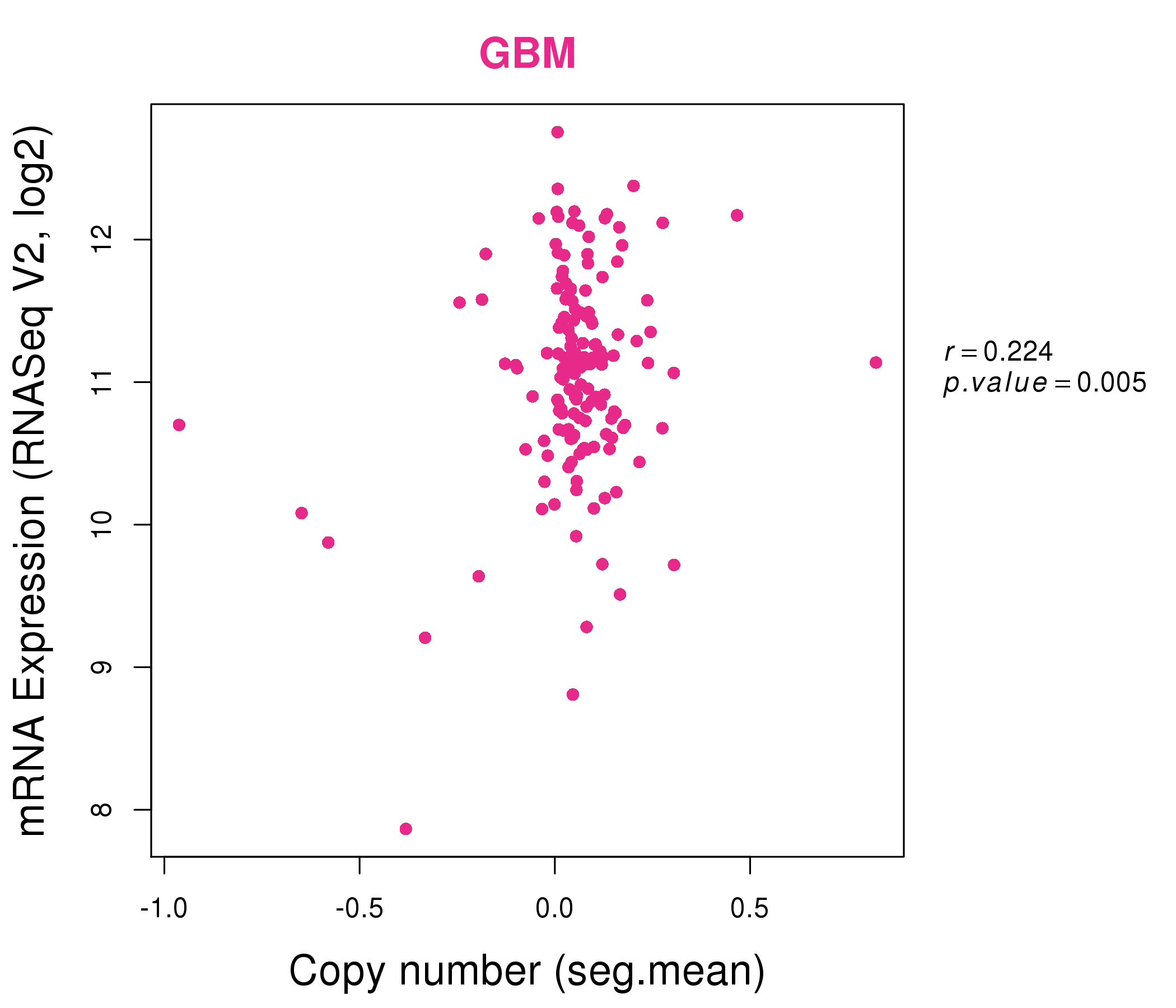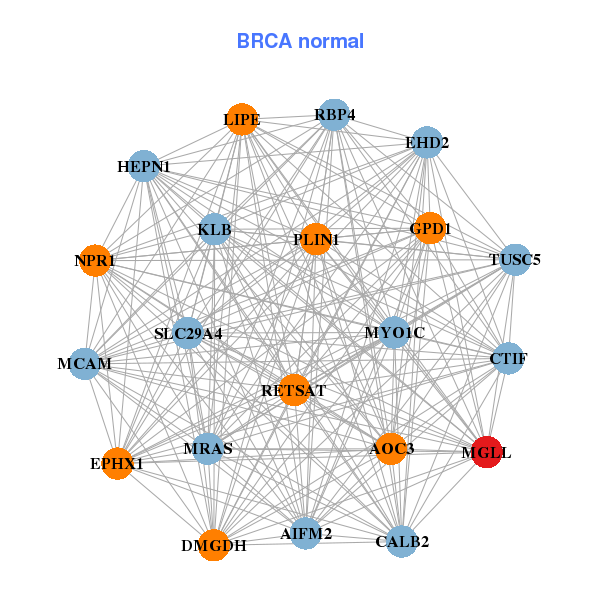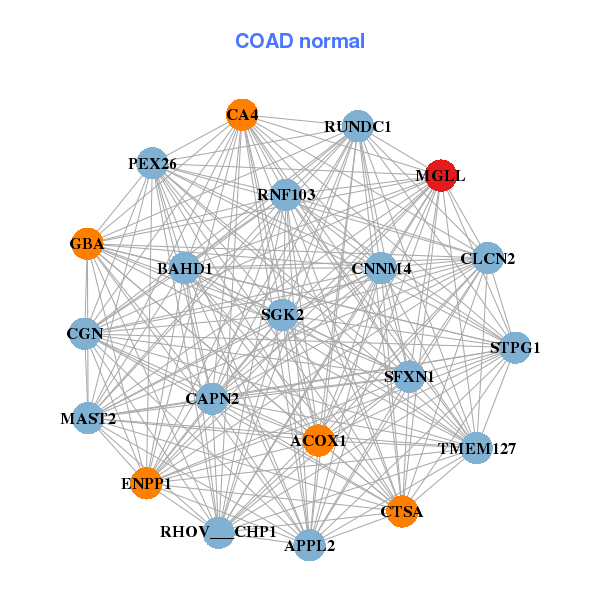|
||||||||||||||||||||||||||||||||||||||||||||||||||||||||||||||||||||||||||||||||||||||||||||||||||||||||||||||||||||||||||||||||||||||||||||||||||||||||||||||||||||||||||||||||||||||||||||||||||||||||||||||||||||||||||||||||||||||||||||||||||||||||||||||||||||||||||||||||||||||||||||||||||||||||||||||||||||||||||
| |
| Phenotypic Information (metabolism pathway, cancer, disease, phenome) |
| |
| |
| Gene-Gene Network Information: Co-Expression Network, Interacting Genes & KEGG |
| |
|
| Gene Summary for MGLL |
| Basic gene info. | Gene symbol | MGLL |
| Gene name | monoglyceride lipase | |
| Synonyms | HU-K5|HUK5|MAGL|MGL | |
| Cytomap | UCSC genome browser: 3q21.3 | |
| Genomic location | chr3 :127407904-127542093 | |
| Type of gene | protein-coding | |
| RefGenes | NM_001003794.2, NM_001256585.1,NM_007283.6, | |
| Ensembl id | ENSG00000074416 | |
| Description | lysophospholipase homologmonoacylglycerol lipase | |
| Modification date | 20141207 | |
| dbXrefs | MIM : 609699 | |
| HGNC : HGNC | ||
| Ensembl : ENSG00000074416 | ||
| HPRD : 17574 | ||
| Vega : OTTHUMG00000159641 | ||
| Protein | UniProt: go to UniProt's Cross Reference DB Table | |
| Expression | CleanEX: HS_MGLL | |
| BioGPS: 11343 | ||
| Gene Expression Atlas: ENSG00000074416 | ||
| The Human Protein Atlas: ENSG00000074416 | ||
| Pathway | NCI Pathway Interaction Database: MGLL | |
| KEGG: MGLL | ||
| REACTOME: MGLL | ||
| ConsensusPathDB | ||
| Pathway Commons: MGLL | ||
| Metabolism | MetaCyc: MGLL | |
| HUMANCyc: MGLL | ||
| Regulation | Ensembl's Regulation: ENSG00000074416 | |
| miRBase: chr3 :127,407,904-127,542,093 | ||
| TargetScan: NM_001003794 | ||
| cisRED: ENSG00000074416 | ||
| Context | iHOP: MGLL | |
| cancer metabolism search in PubMed: MGLL | ||
| UCL Cancer Institute: MGLL | ||
| Assigned class in ccmGDB | A - This gene has a literature evidence and it belongs to cancer gene. | |
| References showing role of MGLL in cancer cell metabolism | 1. Galli GG, Multhaupt HA, Carrara M, de Lichtenberg KH, Christensen IB, et al. (2014) Prdm5 suppresses Apc(Min)-driven intestinal adenomas and regulates monoacylglycerol lipase expression. Oncogene 33: 3342-3350. doi: 10.1038/onc.2013.283. go to article 2. Cadenas C, Vosbeck S, Hein EM, Hellwig B, Langer A, et al. (2012) Glycerophospholipid profile in oncogene-induced senescence. Biochim Biophys Acta 1821: 1256-1268. doi: 10.1016/j.bbalip.2011.11.008. go to article | |
| Top |
| Phenotypic Information for MGLL(metabolism pathway, cancer, disease, phenome) |
| Cancer | CGAP: MGLL |
| Familial Cancer Database: MGLL | |
| * This gene is included in those cancer gene databases. |
|
|
|
|
|
|
| ||||||||||||||||||||||||||||||||||||||||||||||||||||||||||||||||||||||||||||||||||||||||||||||||||||||||||||||||||||||||||||||||||||||||||||||||||||||||||||||||||||||||||||||||||||||||||||||||||||||||||||||||||||||||||||||||||||||||||||||||||||||||||||||||||||||||||||||||||||||||||||||||||||||||||||||||||||
Oncogene 1 | Significant driver gene in | |||||||||||||||||||||||||||||||||||||||||||||||||||||||||||||||||||||||||||||||||||||||||||||||||||||||||||||||||||||||||||||||||||||||||||||||||||||||||||||||||||||||||||||||||||||||||||||||||||||||||||||||||||||||||||||||||||||||||||||||||||||||||||||||||||||||||||||||||||||||||||||||||||||||||||||||||||||||||
| cf) number; DB name 1 Oncogene; http://nar.oxfordjournals.org/content/35/suppl_1/D721.long, 2 Tumor Suppressor gene; https://bioinfo.uth.edu/TSGene/, 3 Cancer Gene Census; http://www.nature.com/nrc/journal/v4/n3/abs/nrc1299.html, 4 CancerGenes; http://nar.oxfordjournals.org/content/35/suppl_1/D721.long, 5 Network of Cancer Gene; http://ncg.kcl.ac.uk/index.php, 1Therapeutic Vulnerabilities in Cancer; http://cbio.mskcc.org/cancergenomics/statius/ |
| KEGG_GLYCEROLIPID_METABOLISM REACTOME_PHOSPHOLIPID_METABOLISM REACTOME_METABOLISM_OF_LIPIDS_AND_LIPOPROTEINS | |
| OMIM | |
| Orphanet | |
| Disease | KEGG Disease: MGLL |
| MedGen: MGLL (Human Medical Genetics with Condition) | |
| ClinVar: MGLL | |
| Phenotype | MGI: MGLL (International Mouse Phenotyping Consortium) |
| PhenomicDB: MGLL | |
| Mutations for MGLL |
| * Under tables are showing count per each tissue to give us broad intuition about tissue specific mutation patterns.You can go to the detailed page for each mutation database's web site. |
| - Statistics for Tissue and Mutation type | Top |
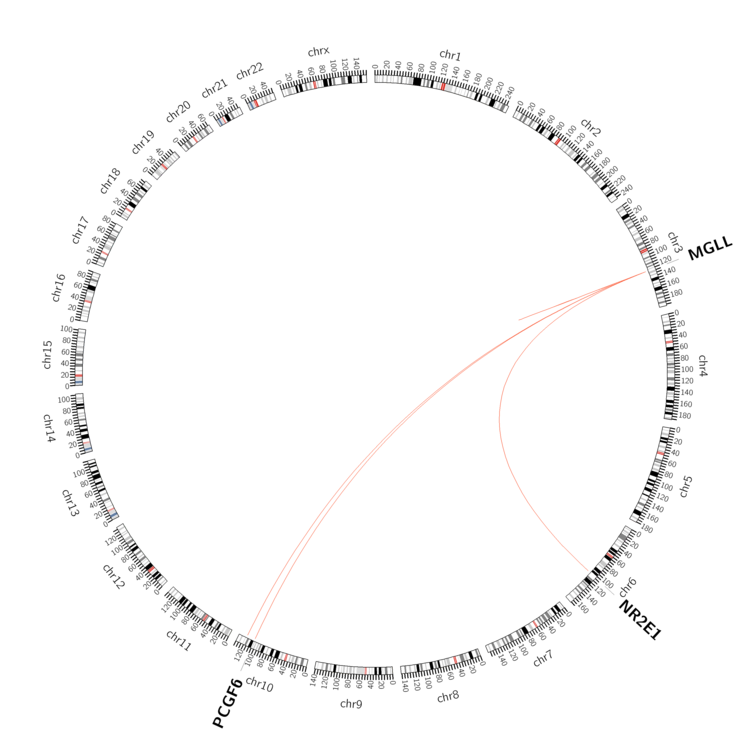 |
| - For Inter-chromosomal Variations |
| * Inter-chromosomal variantions includes 'interchromosomal amplicon to amplicon', 'interchromosomal amplicon to non-amplified dna', 'interchromosomal insertion', 'Interchromosomal unknown type'. |
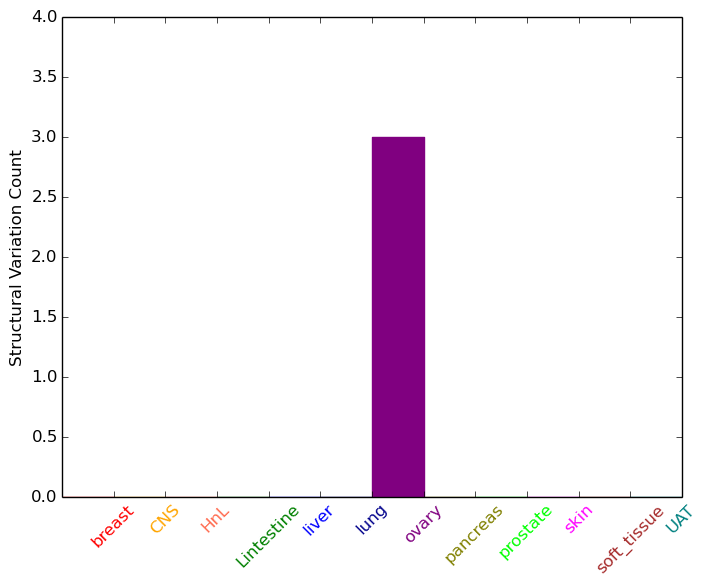 |
| - For Intra-chromosomal Variations |
| * Intra-chromosomal variantions includes 'intrachromosomal amplicon to amplicon', 'intrachromosomal amplicon to non-amplified dna', 'intrachromosomal deletion', 'intrachromosomal fold-back inversion', 'intrachromosomal inversion', 'intrachromosomal tandem duplication', 'Intrachromosomal unknown type', 'intrachromosomal with inverted orientation', 'intrachromosomal with non-inverted orientation'. |
 |
| Sample | Symbol_a | Chr_a | Start_a | End_a | Symbol_b | Chr_b | Start_b | End_b |
| ovary | MGLL | chr3 | 127438066 | 127438086 | chr3 | 127564415 | 127564435 | |
| ovary | MGLL | chr3 | 127522999 | 127523019 | MGLL | chr3 | 127525693 | 127525713 |
| ovary | MGLL | chr3 | 127528070 | 127528090 | PCGF6 | chr10 | 105086403 | 105086423 |
| ovary | MGLL | chr3 | 127528122 | 127528142 | chr10 | 120727510 | 120727530 | |
| ovary | MGLL | chr3 | 127530155 | 127530175 | NR2E1 | chr6 | 108489988 | 108490008 |
| pancreas | MGLL | chr3 | 127461420 | 127461440 | chr3 | 127406005 | 127406025 |
| cf) Tissue number; Tissue name (1;Breast, 2;Central_nervous_system, 3;Haematopoietic_and_lymphoid_tissue, 4;Large_intestine, 5;Liver, 6;Lung, 7;Ovary, 8;Pancreas, 9;Prostate, 10;Skin, 11;Soft_tissue, 12;Upper_aerodigestive_tract) |
| * From mRNA Sanger sequences, Chitars2.0 arranged chimeric transcripts. This table shows MGLL related fusion information. |
| ID | Head Gene | Tail Gene | Accession | Gene_a | qStart_a | qEnd_a | Chromosome_a | tStart_a | tEnd_a | Gene_a | qStart_a | qEnd_a | Chromosome_a | tStart_a | tEnd_a |
| BF819641 | FLNA | 10 | 365 | X | 153580934 | 153581464 | MGLL | 359 | 615 | 3 | 127411024 | 127413933 | |
| AI817662 | MGLL | 2 | 125 | 3 | 127410960 | 127411083 | MGLL | 120 | 359 | 3 | 127408820 | 127409210 | |
| BI014363 | MGLL | 1 | 100 | 3 | 127509273 | 127509373 | HDLBP | 101 | 186 | 2 | 242169019 | 242169104 | |
| Top |
| Mutation type/ Tissue ID | brca | cns | cerv | endome | haematopo | kidn | Lintest | liver | lung | ns | ovary | pancre | prost | skin | stoma | thyro | urina | |||
| Total # sample | 1 | 1 | ||||||||||||||||||
| GAIN (# sample) | 1 | 1 | ||||||||||||||||||
| LOSS (# sample) |
| cf) Tissue ID; Tissue type (1; Breast, 2; Central_nervous_system, 3; Cervix, 4; Endometrium, 5; Haematopoietic_and_lymphoid_tissue, 6; Kidney, 7; Large_intestine, 8; Liver, 9; Lung, 10; NS, 11; Ovary, 12; Pancreas, 13; Prostate, 14; Skin, 15; Stomach, 16; Thyroid, 17; Urinary_tract) |
| Top |
|
 |
| Top |
| Stat. for Non-Synonymous SNVs (# total SNVs=10) | (# total SNVs=8) |
 | 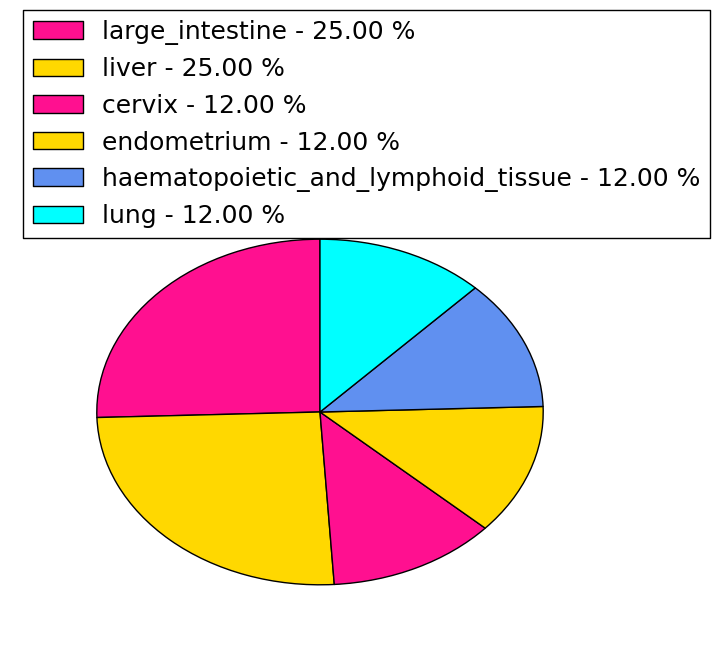 |
(# total SNVs=1) | (# total SNVs=0) |
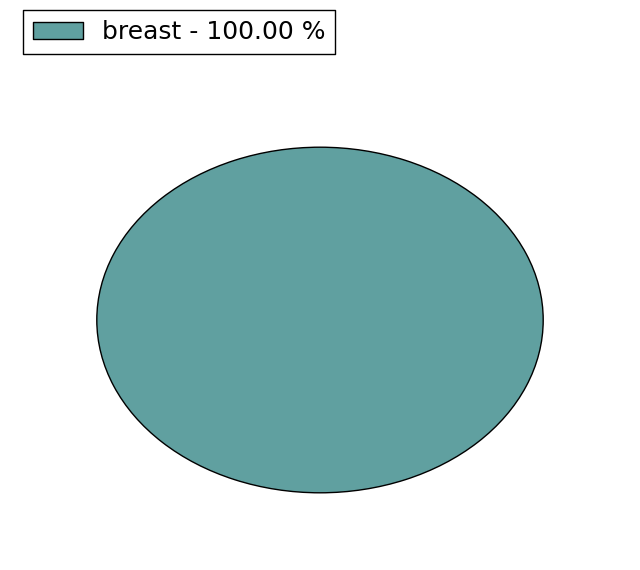 |
| Top |
| * When you move the cursor on each content, you can see more deailed mutation information on the Tooltip. Those are primary_site,primary_histology,mutation(aa),pubmedID. |
| GRCh37 position | Mutation(aa) | Unique sampleID count |
| chr3:127540605-127540605 | p.L19L | 2 |
| chr3:127439932-127439932 | p.L148L | 2 |
| chr3:127439934-127439934 | p.L148L | 2 |
| chr3:127413955-127413955 | p.V217I | 1 |
| chr3:127439949-127439949 | p.V143I | 1 |
| chr3:127540540-127540540 | p.P41H | 1 |
| chr3:127413976-127413976 | p.G210S | 1 |
| chr3:127439970-127439970 | p.P136S | 1 |
| chr3:127414007-127414007 | p.L199L | 1 |
| chr3:127439973-127439977 | p.E134fs*19 | 1 |
| Top |
|
 |
| Point Mutation/ Tissue ID | 1 | 2 | 3 | 4 | 5 | 6 | 7 | 8 | 9 | 10 | 11 | 12 | 13 | 14 | 15 | 16 | 17 | 18 | 19 | 20 |
| # sample | 1 | 1 | 4 | 1 | 2 | 1 | 6 | 1 | 3 | |||||||||||
| # mutation | 1 | 1 | 4 | 1 | 2 | 1 | 7 | 1 | 3 | |||||||||||
| nonsynonymous SNV | 1 | 2 | 1 | 1 | 5 | 2 | ||||||||||||||
| synonymous SNV | 1 | 2 | 1 | 1 | 2 | 1 | 1 |
| cf) Tissue ID; Tissue type (1; BLCA[Bladder Urothelial Carcinoma], 2; BRCA[Breast invasive carcinoma], 3; CESC[Cervical squamous cell carcinoma and endocervical adenocarcinoma], 4; COAD[Colon adenocarcinoma], 5; GBM[Glioblastoma multiforme], 6; Glioma Low Grade, 7; HNSC[Head and Neck squamous cell carcinoma], 8; KICH[Kidney Chromophobe], 9; KIRC[Kidney renal clear cell carcinoma], 10; KIRP[Kidney renal papillary cell carcinoma], 11; LAML[Acute Myeloid Leukemia], 12; LUAD[Lung adenocarcinoma], 13; LUSC[Lung squamous cell carcinoma], 14; OV[Ovarian serous cystadenocarcinoma ], 15; PAAD[Pancreatic adenocarcinoma], 16; PRAD[Prostate adenocarcinoma], 17; SKCM[Skin Cutaneous Melanoma], 18:STAD[Stomach adenocarcinoma], 19:THCA[Thyroid carcinoma], 20:UCEC[Uterine Corpus Endometrial Carcinoma]) |
| Top |
| * We represented just top 10 SNVs. When you move the cursor on each content, you can see more deailed mutation information on the Tooltip. Those are primary_site, primary_histology, mutation(aa), pubmedID. |
| Genomic Position | Mutation(aa) | Unique sampleID count |
| chr3:127439934 | p.L148L,MGLL | 2 |
| chr3:127414007 | p.A164V,MGLL | 1 |
| chr3:127500709 | p.E154Q,MGLL | 1 |
| chr3:127414013 | p.P136S,MGLL | 1 |
| chr3:127500727 | p.V95I,MGLL | 1 |
| chr3:127429437 | p.S83S,MGLL | 1 |
| chr3:127540634 | p.P283S,MGLL | 1 |
| chr3:127429497 | p.G81E,MGLL | 1 |
| chr3:127540652 | p.S261F,MGLL | 1 |
| chr3:127429498 | p.G52E,MGLL | 1 |
| * Copy number data were extracted from TCGA using R package TCGA-Assembler. The URLs of all public data files on TCGA DCC data server were gathered on Jan-05-2015. Function ProcessCNAData in TCGA-Assembler package was used to obtain gene-level copy number value which is calculated as the average copy number of the genomic region of a gene. |
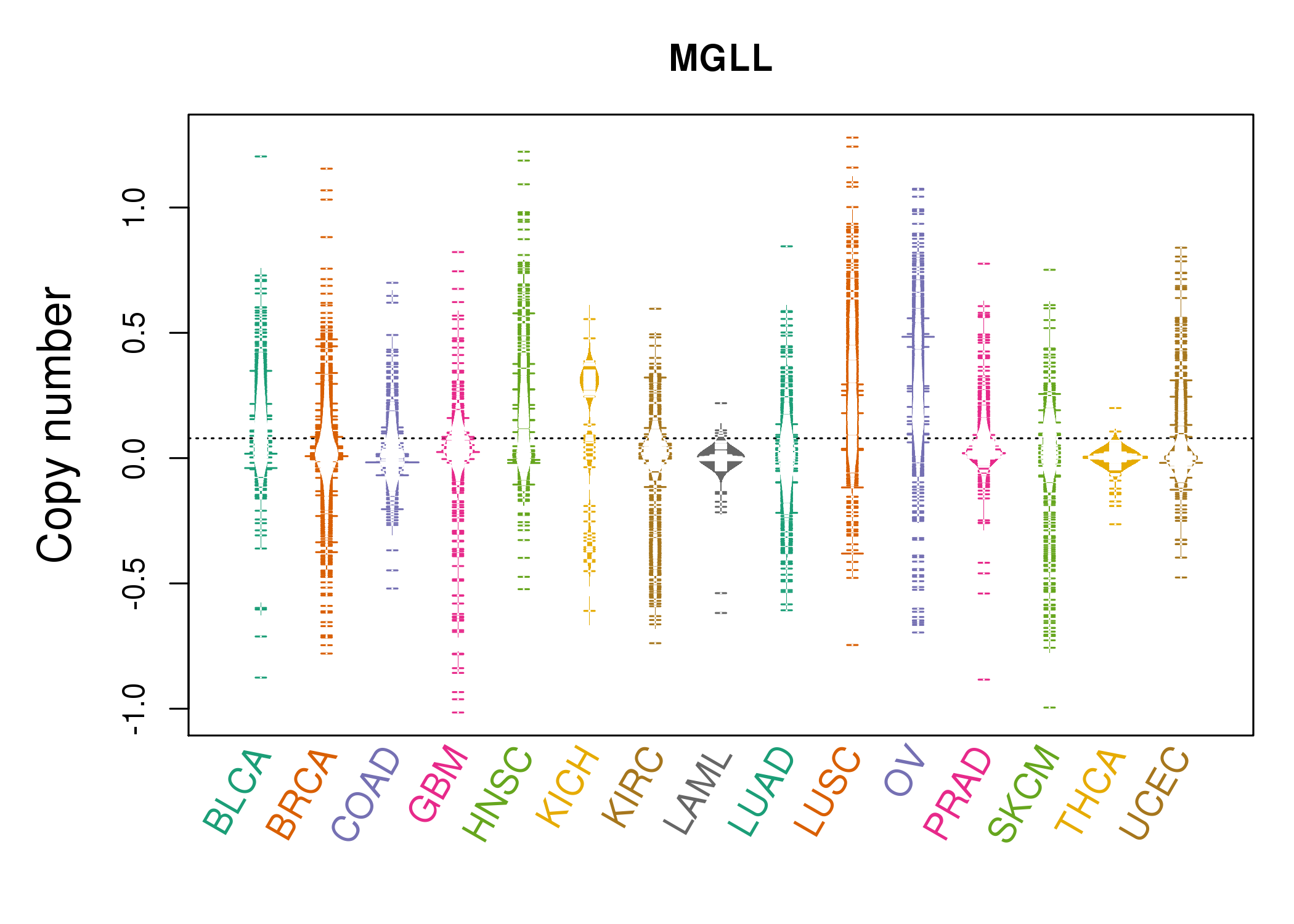 |
| cf) Tissue ID[Tissue type]: BLCA[Bladder Urothelial Carcinoma], BRCA[Breast invasive carcinoma], CESC[Cervical squamous cell carcinoma and endocervical adenocarcinoma], COAD[Colon adenocarcinoma], GBM[Glioblastoma multiforme], Glioma Low Grade, HNSC[Head and Neck squamous cell carcinoma], KICH[Kidney Chromophobe], KIRC[Kidney renal clear cell carcinoma], KIRP[Kidney renal papillary cell carcinoma], LAML[Acute Myeloid Leukemia], LUAD[Lung adenocarcinoma], LUSC[Lung squamous cell carcinoma], OV[Ovarian serous cystadenocarcinoma ], PAAD[Pancreatic adenocarcinoma], PRAD[Prostate adenocarcinoma], SKCM[Skin Cutaneous Melanoma], STAD[Stomach adenocarcinoma], THCA[Thyroid carcinoma], UCEC[Uterine Corpus Endometrial Carcinoma] |
| Top |
| Gene Expression for MGLL |
| * CCLE gene expression data were extracted from CCLE_Expression_Entrez_2012-10-18.res: Gene-centric RMA-normalized mRNA expression data. |
 |
| * Normalized gene expression data of RNASeqV2 was extracted from TCGA using R package TCGA-Assembler. The URLs of all public data files on TCGA DCC data server were gathered at Jan-05-2015. Only eight cancer types have enough normal control samples for differential expression analysis. (t test, adjusted p<0.05 (using Benjamini-Hochberg FDR)) |
 |
| Top |
| * This plots show the correlation between CNV and gene expression. |
: Open all plots for all cancer types
 |
|
 |
|
| Top |
| Gene-Gene Network Information |
| * Co-Expression network figures were drawn using R package igraph. Only the top 20 genes with the highest correlations were shown. Red circle: input gene, orange circle: cell metabolism gene, sky circle: other gene |
: Open all plots for all cancer types
 |
|
| ACACB,AOC3,AQP7,AQP7P1,ARHGEF15,C14orf180,CD300LG, CIDEC,GLYAT,GPD1,GPR146,KCNIP2,LIPE,MGLL, NPR1,PDE2A,PLIN1,PLIN4,RDH5,ROBO4,VWF | AIFM2,AOC3,CALB2,DMGDH,EHD2,EPHX1,GPD1, HEPN1,CTIF,KLB,LIPE,MCAM,MGLL,MRAS, MYO1C,NPR1,PLIN1,RBP4,RETSAT,SLC29A4,TUSC5 |
 |
|
| ATP2A3,B3GALT4,BCAS1,CAPN5,CCNG2,CDHR5,FER1L6, GSN,FAM214B,LIPH,LOC646627,MGLL,MMP28,MUC2, PLA2G10,PRKCD,SCNN1A,ST3GAL4,ST6GALNAC6,TSPAN1,VSIG2 | ACOX1,APPL2,BAHD1,STPG1,CA4,CAPN2,CGN, RHOV___CHP1,CLCN2,CNNM4,CTSA,ENPP1,GBA,MAST2, MGLL,PEX26,RNF103,RUNDC1,SFXN1,SGK2,TMEM127 |
| * Co-Expression network figures were drawn using R package igraph. Only the top 20 genes with the highest correlations were shown. Red circle: input gene, orange circle: cell metabolism gene, sky circle: other gene |
: Open all plots for all cancer types
| Top |
: Open all interacting genes' information including KEGG pathway for all interacting genes from DAVID
| Top |
| Pharmacological Information for MGLL |
| There's no related Drug. |
| Top |
| Cross referenced IDs for MGLL |
| * We obtained these cross-references from Uniprot database. It covers 150 different DBs, 18 categories. http://www.uniprot.org/help/cross_references_section |
: Open all cross reference information
|
Copyright © 2016-Present - The Univsersity of Texas Health Science Center at Houston @ |







